Some years ago, when I was just a bit younger than I am now, another fly fishing guide and I were fishing a well-known Montana creek right before run-off. He was using nymphs, while I was casting a dry fly. We split up for a bit, then met up and compared notes. I was doing pretty well, but he wasn’t having much luck. Then he mentioned that he didn’t think there were many trout around.
I pointed to a little slot right in front of us where the water dropped from maybe 18 inches to 3 feet and told him to cast right there. He followed my advice, made a handful of drifts, and then declared that there were no trout in that slot.
After looking at his rig, which employed a large indicator, followed by two small indicators, with a variety of weights spread out on his leader, and finally, two nymphs, I told him that his nymph rig was the problem.
He disagreed — apparently his rig was incredibly popular in Utah at the time — and then explained how the three indicators worked in concert with the weights and the fly to ensure the perfect presentation, as well as the most trout to hand.
We argued for a bit — it turns out that he had total confidence in his set-up, while I thought it was borderline ridiculous — then finally agreed that the only way to settle our disagreement was for me to fish the same little slot.
More Like This
I cut off my dry fly, tied on a couple of weighted nymphs, added a small yarn indicator in an appropriate spot on my leader and prepared to cast.
As I moved into position, my buddy reiterated that there were no fish in my immediate vicinity.
I caught a nice trout on my first cast.
I caught a nice trout on my second cast.
I caught a nice trout on my third cast.
At which point my friend mentioned that if I continued to work that slot, he was going to push me into the creek and watch me float away.
I don’t fish nymphs quite as much as I used to — I love watching trout rise to a dry fly, so dries are my preference more often than not — but I’ve followed the “advances” in nymph fishing, along with the ongoing Euro-nymphing craze, with a certain amount of interest. Here’s what I can tell you based on decades of observation and personal experience.
We make our nymph fishing far more complicated than it needs to be. Now that’s okay if we’re trying to challenge ourselves to master new techniques, or if we’re drawn to complex angling solutions. Still, I prefer simplicity when it’s a viable choice. I also like to catch fish when I use nymphs. Which is why I tend to focus on “simple nymphing.”
What is simple nymphing? To my mind, it’s nymph fishing that relies on a basic — or “simple” — nymph rig, and that employs many of the same skills we use when dry fly fishing.
When I’m nymphing, I want a rig that does five things:
- First, it should allow me to get a natural drift at the correct depth in the water column.
- Second, my flies should move independently of each other. (I never tie one fly directly to another fly.)
- Third, my nymph rig should communicate immediately that something has interrupted my drift, with absolutely no hesitation or lag time.
- Fourth, the whole set-up should be easy to create, and to adjust or modify.
- Fifth, the rig should allow me to play and land my fish quickly and without much chance that the free hook will hang up on something.
With that in mind, let’s take a look at my typical simple nymphing rig. I start out with a standard 9’ 4X tapered leader connected to the end of a WF-5-F fly line. Then I take a 2 foot length of 4X tippet and tie it to the end of the leader using a blood knot. (We can use 3X or 5X leaders and tippet if those diameters are more appropriate for the situation at hand. We can also go lighter when we add our tippet if that’s helpful.)
I leave the tag end of the leader reasonably long — 6 inches is just about perfect — and trim the tag end of the tippet about an eighth of an inch away from the barrel of the blood knot.
To finish up, I tie an appropriately-weighted fly to the long tag, then I add another appropriately-weighted fly to the end of the tippet. If I want to fish with an indicator, I’ll place a yarn or foam indicator between the line/leader connection and the dropper fly.
Simple, right? Of course, there are a handful of details we need to concentrate on for the system to work as intended.

Flies
I tend to use the weighted dropper fly to get the rig down to the correct depth and the point fly to catch fish. Since I don’t really want to catch trout on the dropper fly — doing so increases the odds of tangles, or of the point fly getting hooked on a dorsal fin or tail — I’ll go larger, heavier and gaudier with the dropper fly. I may even fish a dropper fly with the point of the hook clipped off.
My point fly is typically smaller and more realistic, as well as more lightly weighted, and it usually matches something that the fish have been feeding on recently, whether that’s mayflies, caddis, midges, stoneflies, scuds or something else entirely.
My hope is that the fish will notice the larger dropper fly, check it out, refuse it, and then eat the smaller point fly trailing behind. I can’t tell you if that’s actually what happens — who knows what a fish really sees, or thinks? — but after landing thousands of trout on this set-up, and having my clients catch thousands more on the same basic rig, I have a tremendous amount of confidence in this particular approach.
Split Shot
I rarely use split shot or other weights when I’m nymphing. I can control my depth and sink rate just fine by choosing an appropriately-weighted fly for the dropper, and by the cast and/or mend I utilize. On the rare occasions when I do use split shot, I put them between the dropper fly and the point fly. I never, ever, ever put shot above the dropper fly. Why? Because I don’t want a hinge in my leader above my flies.
Indicators
If I decide to use an indicator, I typically opt for a small, flexible indicator made from yarn or foam, then treated with the same floatant I use on my dry flies. If the fish are spooky, I’ll go with white, gray or green. If I’m not too concerned about spooking fish, I’ll use orange or chartreuse.
I invariably adjust my indicator placement to account for the water depth, so I suggest using an indicator that will be easy to move up or down your leader.
If I’m fishing upstream, I’ll likely have 1.5 times the average water depth between my indicator and my dropper fly. If I’m fishing across stream, or across and down, I may go as short as the actual water depth between the indicator and dropper fly.
Finally, there are times when an indicator just isn’t appropriate. On those occasions I might use a dry fly as an indicator, or I might high stick my nymphs, or I might use extra floatant on the end of my fly line and watch the line the same way I’d watch an indicator.
Knots
I prefer a blood knot over a surgeon’s knot for attaching the tippet, as the tag end on a blood knot comes off at a 90 degree angle and seems to wrap around the leader less frequently than the tag end on a surgeon’s knot. By the way, if you clip your second tag end tight, it’s much more likely to pull loose if you stick a big fish on the dropper nymph. If you leave an eighth of an inch on that opposite tag end, the knot is far less likely to break or pull loose.
I use an improved clinch knot to attach my flies, but you can use most any knot you have confidence in.
Tippet Rings
Tippet rings are completely unnecessary with a simple nymphing rig. I don’t use them, and I don’t recommend them.
So what are the main advantages to this simple nymphing approach?
- Your rig will cast easier, and tangle less.
- You’ll waste less time on the water.
- You don’t need specialized equipment.
- It’s no issue to switch back and forth between nymphs, dries and streamers.
- It’s easy to change your dropper fly without changing your point fly.
- Your flies aren’t directly connected, so it’s much easier to get a natural drift.
- The system is extremely versatile.
- You’ll see your takes sooner.
- You’ll miss fewer fish.
- You’ll land more trout.
Those are all solid reasons to opt for a simple nymphing rig. Then there’s Occam’s razor, which tells us that everything else being equal, the simplest explanation — or, by extension, the simplest approach — is usually the best.
Before we wrap up, please take just a second and think about what’s really required for successful nymph fishing.
First, you need to present appropriate flies to a trout, or to likely looking water, at the right depth, and without drag or unnatural movement.
Then you need to detect the strike and set the hook before the fish expels your nymph.
That's it.
There are any number of ways to accomplish those goals, and there’s nothing wrong with choosing a more complicated or specialized approach; for example, Euro-nymphing. But if you prefer maximum flexibility on the water, or if you like the idea of catching fish as simply as possible — without a bunch of bells & whistles — then this incredibly effective style of nymphing might be ideal for you.
We’ve focused on the rig itself, along with the benefits of this particular approach, in part one of this article. In part two, we’ll explore how we can utilize dry fly techniques to expand your on-the-water versatility and increase your nymphing success.





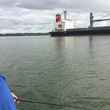





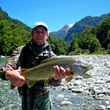



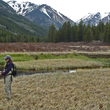




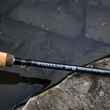
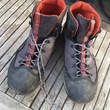



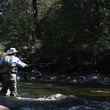
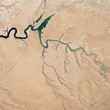

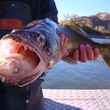

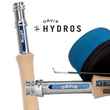
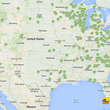
Comments
Bob replied on Permalink
Hey Todd
Thanks for the simple approach. How do you go about adding tippet for the point fly after making fly changes and the original tag end is too short?
Thanks
Todd Tanner replied on Permalink
Bob, I can typically get away with changing the dropper fly once or twice, and the point fly four or five times, before I have any issues. When I get to that point, I simply cut off the old blood knot, grab a spool of tippet, and re-tie with a new blood knot. Depending on how good you are with your knots, you can be done with the blood knot and have both flies attached in two minutes or less.
Bolderado replied on Permalink
Agree with the entire post with one exception. I love using tippet rings and use them on literally every rig including a dry fly rig, but only for tippet changes and never within 3' of the fly. The tippet ring does a few things really well. It takes the place of your blood knot with the tag end, it keeps your leader from growing shorter and tippet changes are a snap. I actually like tying blood knots and avoiding them is not why I use a tippet ring. I really don't like franken-leaders. It started out as a 9' 4X and five trips later it is a 7' 2X and you have a 3X tippet section, a 4X section, etc. On a nymph rig it is so easy to replace the tag after you've made 4 fly changes and it's really short. Clip off the tag altogether and tie on a 3' tippet if you want to fish a dry fly. Tie the tag back on when you want to swing a pair of soft hackles. Simple.
S.T. replied on Permalink
If you replaced the blood knot in his example with a tippet ring wouldn't your dropper fly would be 6" from the ring?
Bolderado replied on Permalink
Actually, after reading this article I read a bunch more about point fly dropper fly. There seems to be a lot of confusion about which is which and which belongs on the longer tag. If you use a tippet ring, you have a longer tag and a shorter one. The heavier fly will always hang vertically, regardless of the tag length, the lighter fly will come off at an angle. The heavier fly also acts as the weight to get the rig down and due to its size, it may not be the fly the fish are targeting. Let's say you are winter fishing and you are in 4' of water and want to get your rig down. For the heavy fly you pick a perdigon or similar. Your money fly is say a size 22 zebra midge. In this scenario, I would tie the perdigon to the short tag, say 4-6" off the ring. You are not expecting to catch fish on this fly, but you might. I tie the midge on an 8-10" tag. The reason for this is you might want to make a few fly changes, size, color, etc, and your tag will get shorter with each change. However, this set-up is more prone to tangles. Once I have validated my money fly and intend to stick with it, I may reverse the two. Both approaches work, it comes down to tangles vs. convenience.
brett replied on Permalink
Which is the point fly? The one on the bottom of the tippet or on the tag end off of the blood knot??
Guy replied on Permalink
The point fly is the one at the end of the line/tippet. Think of it as the point on an arrow. That is how I remember it.
John Hershey replied on Permalink
Questions? The "point fly" is the one attached to the tag? The "dropper fly" is on the end of the tippit? Yes?
WHERE DOES THE SPLIT SHOT GO?? What does "Between the dropper fly and the point fly" mean, especially since it "never, ever" goes above the dropper fly?
Thank you for your reply. I would like to try this method. JH
Todd Tanner replied on Permalink
John, the smaller point fly is on the end of the tippet. The larger dropper fly is on the tag end coming off the knot. I almost never use split shot. I use weighted flies that eliminate the need for split shot. Hope that helps clarify things.
Fritz replied on Permalink
I know there are many articles where both terms are used interchangeably. In a dry/dropper setup, the bottom fly is the dropper. In a euro rig. the heaviest nymph, which is typically on the bottom, is the point fly.
There may other interpretations
Don Andersen replied on Permalink
Todd,
You must live in my pocket. Started indicator nymphing about 1973 when I used Panfish Corkies I got from Herters who went outta busines about 1975. Switched to yarn about 30 years ago. I use Macrame originally in white. Now in multi-colours.. As I make my own leaders, I use the leader knots as "bobber stops" to rest the yarn against. Got an article on the system on my site.
B Haney replied on Permalink
I wonder why your buddy's complicated Rube Goldberg nymph rig worked so well in Utah but not in Montana? Are the Utah fish that much more sophisticated?
Pages